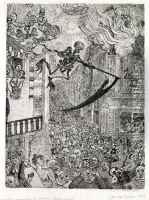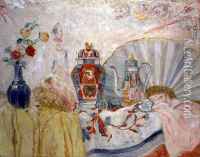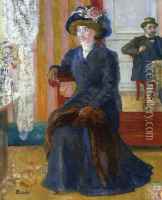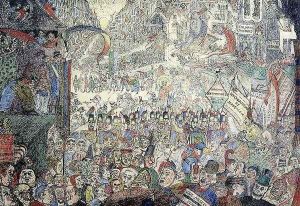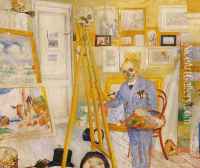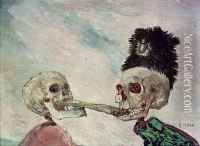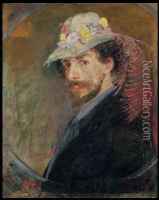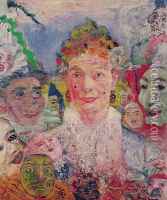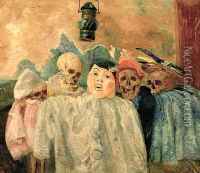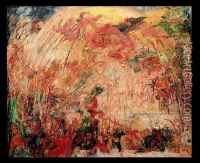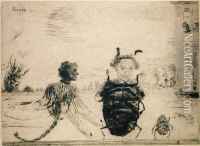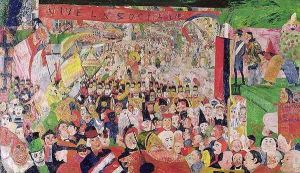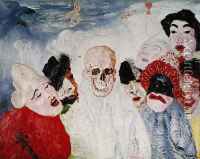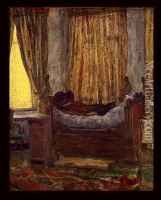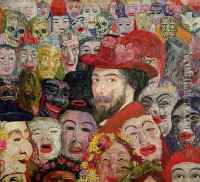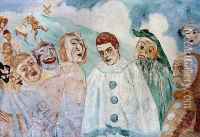James Ensor Paintings
James Sidney Edouard, Baron Ensor was a Belgian painter and printmaker, born on April 13, 1860, in Ostend, Belgium. He was an influential figure in the development of both Expressionism and Surrealism. Ensor was raised in a culturally inclined family, with his mother owning a curiosity shop filled with exotic objects that would later influence his artistic imagination.
Ensor received his initial artistic training at the Academy of Fine Arts in Brussels from 1877 to 1880. His early work reflected the influence of Flemish masters and the Realist paintings of the French artist Gustave Courbet. However, by the mid-1880s, Ensor began to turn away from traditional subjects and techniques. He started to develop a distinctive style characterized by the use of vivid colors, grotesque caricatures, and fantastical imagery, often incorporating masks and skeletons.
The artist's most famous painting, 'The Entry of Christ into Brussels in 1889' (1888), is a prime example of his unique approach. This large-scale work is a satirical and chaotic portrayal of Christ's entry into Brussels, filled with masked figures and political commentary. It was not exhibited publicly until 1929, but it has since been recognized as a masterpiece of modern art.
Throughout his career, Ensor was associated with the avant-garde group Les XX (Les Vingt), a band of twenty Belgian painters, designers, and sculptors. He exhibited with them and even served as their president. Despite his association with Les XX, Ensor often felt misunderstood by his contemporaries and struggled with acceptance within the mainstream art world.
In his later years, Ensor's work finally began to receive broader recognition. He was awarded the title of Baron by King Albert I of Belgium in 1929. Ensor continued to paint until his death on November 19, 1949, in Ostend, leaving behind a body of work that would go on to influence future generations of artists. His home in Ostend is now a museum dedicated to his life and work.
